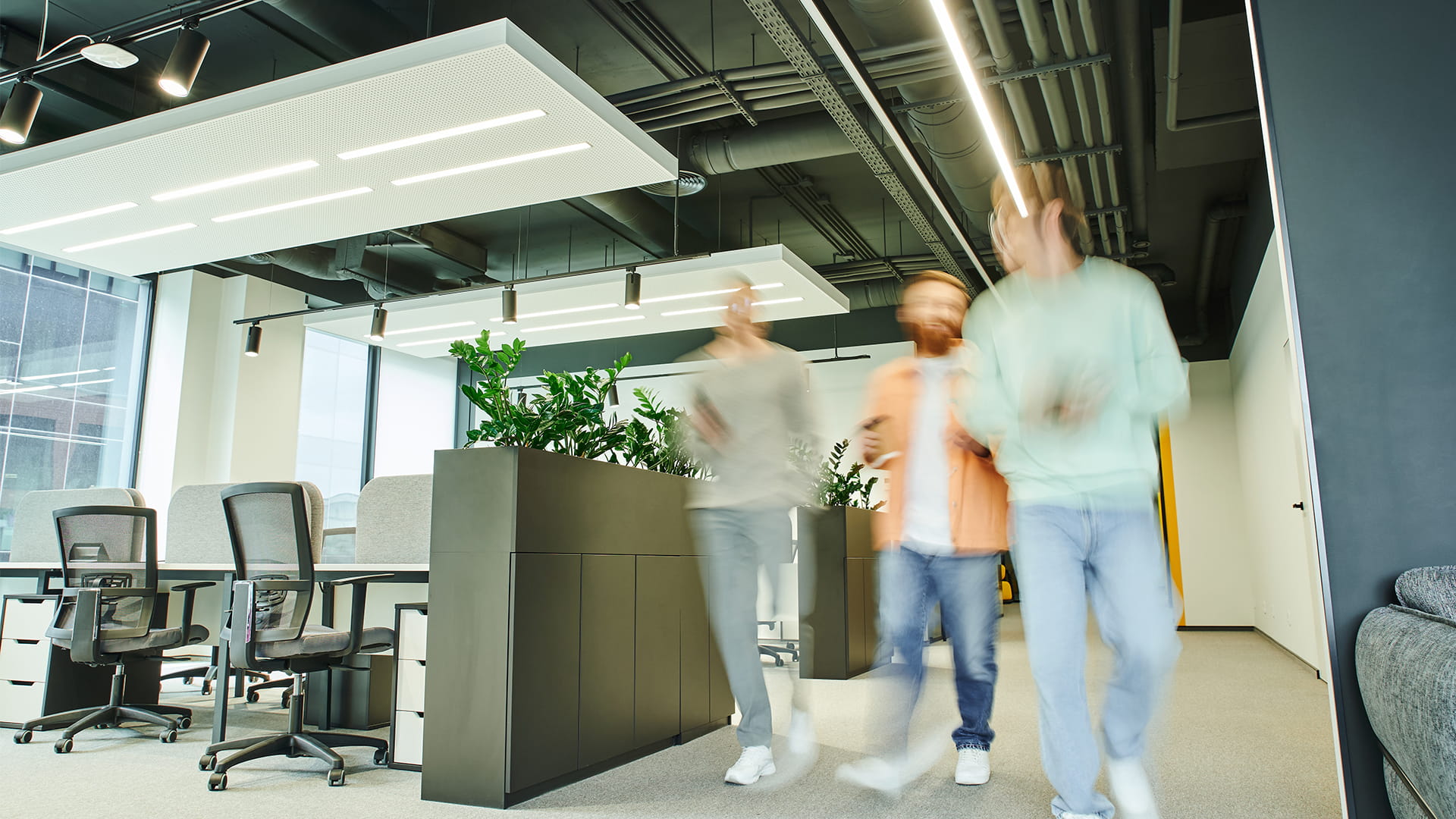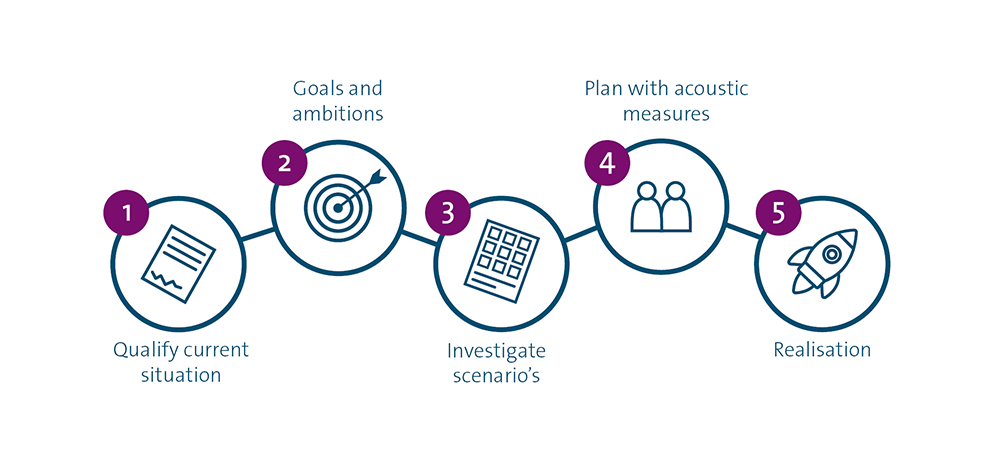How do you ensure optimal office acoustics?

The biggest challenges to good office acoustics
The acoustics of the office have a great influence on how the working environment is perceived. Good acoustics mean that when you are working in the office you won't be disturbed by the people around you. A poorly designed acoustic environment can lead to unpleasant circumstances. Not only can an interrupted focus be a problem, but people can also suffer from stress, headache, and in the worst cases even burnout, because of bad acoustic design.If employees do not enjoy working in the office, the chance is great that they will stay at home. When employees don't come to the office, they are less likely to build a bond with the company and with their colleagues. This makes employee retention more difficult.
One important challenge is how to manage noise optimally in a shared working environment in which different types of work are performed. Conversations should not distract colleagues who want to concentrate on their work, while in collaborative workspaces it is important that you can hear and understand each other well. So is there actually a way to ensure that all these different people with all these different goals can work in one office? Of course! Achieving good acoustic quality is done by making various provisions in, for example, the architectural design, the accommodation concept, and the interior design of the building.

A pleasant office consists of a combination of technical solutions and organisational strategies that ensure that employees enjoy coming to the office.
Fast solutions for improving office acoustics
A variety of steps can be taken to improve acoustics in the working environment. First, determine if the space is suited to the work you want to do. If you want to work together, for example, you are more likely to sit in an open space. And then again, if people need to make lots of calls, you want them to do so in a closed space.Quick solutions can often go a long way. For example, simply installing a sound-absorbing ceiling ensures a good basic acoustical quality. But think of other simple solutions, such as installing carpets or offering special facilities such as telephone booths. Even facilities such as acoustic partitions between desks can provide a quick solution.
Are you going to start designing the working environment differently for improved acoustics? Be sure that it is clear what each room is intended for. For example, you don't want the design of the ‘quiet space’ to invite you to chat with your colleagues.
But what if all the solutions you have applied do not yet have the desired effect on the acoustics of your working environment? Then it is time to think about other measures.
Long term acoustic solutions
While quick fixes are great in the short term, it's also important to consider the long term. And that requires a broader, more extensive look at the open-plan office which calls for more time and insight. To really improve your office acoustics, you must also look at how the organisation and its employees use (and behave in) the building. But you also need to keep in mind if the use of the building fits with what the organisation needs right now and if it will suit future growth ambitions. If people come to the office to collaborate, you’ll need a different approach, then if people want to focus on their own work.Good research is the starting point of the solution. We do this by performing measurements and creating simulations. As a basis for further action, you need to qualify the current situation and determine to what extent it fits the use of the building. With the help of a simulation model, you can get a clear idea of where you need to go. These simulations also make it possible to investigate different scenarios: you can immediately see what the options are, and what is needed to achieve them. And this also allows you to weigh up the trade-offs between the possible alternatives, and see which investments are worth it!

The real value of good office acoustics
Creating a healthy and safe office requires a good combination, and deployment of, the right expertise. We see that organisations are getting a better grip on their work processes, and which facilities are connected to this. To support you in making important choices in this process, we map out the sound experience of employees and we use measurements to monitor and inventory the use of office facilities. Our acoustic consultants work closely with housing consultants and architects to investigate acoustic quality scenarios. We then assess these scenarios with 3D acoustic simulations, based on noise measurements on location.The most important tips for improving your office acoustics in a nutshell:



